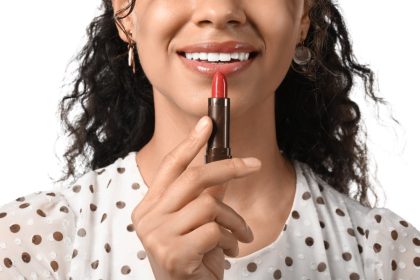It sounds completely backward. Washing your face with oil? Especially if you’ve spent years blotting away shine and investing in oil-free everything? But the oil cleansing method has converted countless skeptics into devoted fans. This centuries-old practice has made a major comeback, with proponents claiming it’s transformed their skin in ways conventional cleansers never could. But despite its growing popularity, this approach isn’t right for everyone. Understanding both the benefits and potential pitfalls can help you decide if it’s worth trying or best avoided.
How oil cleansing actually works
The science behind oil cleansing is surprisingly simple and follows a basic chemistry principle. Like dissolves like. The oils you apply to your skin dissolve the hardened oils clogging your pores along with makeup, sunscreen, and environmental pollutants.
Unlike traditional soap-based cleansers that strip away your skin’s natural oils, oil cleansing removes impurities while maintaining your skin’s moisture barrier. This gentle approach prevents the cycle of stripped skin overproducing oil to compensate.
The method typically involves massaging oils onto dry skin for several minutes, allowing the oil to penetrate pores and dissolve buildup. The massage itself offers additional benefits by stimulating lymphatic drainage and increasing circulation.
After massaging, you place a warm washcloth over your face to steam open the pores. As the cloth cools, it helps lift away the dissolved impurities along with the cleansing oil. Some people follow with a gentle water-based cleanser, while others simply moisturize as needed.
Different oils offer different benefits. Some popular choices include jojoba oil, which closely resembles human sebum and works well for most skin types. Hemp seed oil has anti-inflammatory properties and rates low on the comedogenic scale, making it suitable for acne-prone skin. Castor oil provides deeper cleansing but can be drying when used alone, so it’s typically mixed with other oils.
The surprising benefits beyond clean skin
Beyond simply removing dirt and makeup, oil cleansing offers additional advantages that have fueled its growing popularity.
Many users report significant improvement in skin texture and tone. The gentle exfoliation from the washcloth removal step helps slough away dead skin cells without harsh scrubbing or chemical exfoliants.
Balanced oil production often follows after an initial adjustment period. When your skin senses adequate oil present, it may reduce its own production, potentially helping both oily and combination skin types find equilibrium.
Reduced inflammation and redness are common benefits, particularly for those with sensitive or reactive skin. The soothing properties of many carrier oils can calm irritated skin in ways that conventional cleansers cannot.
Makeup removal becomes effortless with oil cleansing. Even waterproof mascara and long-wear foundation dissolve easily, eliminating the need for separate makeup removers that may contain harsh ingredients.
The ritual aspect shouldn’t be overlooked. The few minutes spent massaging oil into your skin can become a mindful self-care practice, reducing stress which itself can contribute to skin problems.
Who thrives with oil cleansing
Certain skin types and conditions seem particularly well-suited to this cleansing method.
Mature skin often responds beautifully to oil cleansing. As sebum production naturally decreases with age, the additional moisture and nutrients from cleansing oils can help maintain suppleness and prevent the tight, dry feeling other cleansers might cause.
Dry or dehydrated skin typically experiences immediate relief. The method addresses both oil and water content issues by preventing moisture loss while cleansing.
Those with sensitive skin prone to irritation from conventional cleansers often find oil cleansing gentle enough to use daily. The method avoids potentially irritating surfactants, fragrances, and preservatives found in many commercial products.
Makeup enthusiasts who wear full coverage foundation daily appreciate how thoroughly oil cleansing removes all traces of makeup without requiring harsh rubbing or multiple products.
People living in harsh climates benefit from the protective qualities oil cleansing provides. Whether facing bitter cold, dry desert air, or urban pollution, the method helps shield skin from environmental stressors.
Who should approach with caution or avoid entirely
Despite its benefits for many, oil cleansing isn’t universally suitable. Several factors might make this method problematic for certain individuals.
Those with fungal acne should generally avoid oil cleansing. Malassezia, the yeast that causes fungal acne, feeds on certain fatty acids found in many oils. Using these oils can potentially worsen the condition rather than improve it.
People with rosacea may experience mixed results. While some find certain oils soothing, others report increased flushing and irritation. The warm washcloth step can trigger flare-ups in heat-sensitive rosacea skin.
If you have a compromised skin barrier from over-exfoliation or skin conditions like eczema, introducing new oils might cause further irritation or allergic reactions. A damaged barrier has less protection against potential irritants.
Those allergic to specific botanical ingredients should exercise extreme caution. Many natural oils contain potent plant compounds that can trigger reactions in sensitive individuals. Tree nut allergies, for example, would make almond oil and similar options potentially dangerous.
Individuals taking certain medications like isotretinoin might find oil cleansing too rich for their significantly altered skin. The drug dramatically reduces oil production, changing how skin responds to topical oils.
People prone to milia, those tiny white bumps caused by trapped keratin, sometimes report increased formation with oil cleansing, particularly when using heavier oils or inadequately removing the cleansing oil.
The adjustment period no one talks about
One aspect of oil cleansing that deserves more attention is the potential adjustment period, which can discourage newcomers from sticking with the method long enough to see benefits.
Initial breakouts are relatively common as oil cleansing begins dislodging deeply embedded debris from pores. This “purging” phase typically lasts one to two weeks but can continue longer depending on your skin condition when starting.
Finding your ideal oil blend often requires experimentation. What works perfectly for someone else might cause problems for your unique skin. This trial and error process takes patience and willingness to adjust your approach.
The technique itself has a learning curve. Many first-timers either use too much oil, making removal difficult, or don’t remove the oil thoroughly enough, leading to residue that can clog pores overnight.
Weather and seasonal changes may necessitate adjusting your oil blend throughout the year. What works in dry winter months might feel too heavy during humid summer weather.
Your skin’s needs change over time due to hormones, age, and environmental factors. The perfect oil cleansing routine isn’t static but evolves with your skin’s changing condition.
Making oil cleansing work for you
If you decide to try oil cleansing, several strategies can help maximize benefits while minimizing potential problems.
Start with a patch test of any new oil on a small area of your face. Watch for 24-48 hours for any adverse reactions before applying more widely. This simple precaution can prevent major skin setbacks.
Begin with just one or two basic oils rather than complex blends containing essential oils or numerous carrier oils. This makes it easier to identify what works for your skin and what doesn’t.
Consider a gradual transition rather than immediately abandoning your current routine. Try oil cleansing just at night initially, maintaining your regular morning routine until your skin adjusts.
Pay special attention to thorough removal. The most common mistake with oil cleansing is inadequate removal, leaving behind residue that can clog pores. Use clean, warm washcloths and consider a gentle second cleanse if your skin feels coated after the first round.
Adjust your technique seasonally. You might need richer oils in winter and lighter options in summer. Listen to your skin’s changing needs rather than rigidly sticking to one formula.
Be willing to modify or abandon the approach if your skin consistently reacts poorly. Despite oil cleansing’s benefits for many, it simply isn’t compatible with all skin types and conditions.
Beyond basic oil cleansing
As you become comfortable with basic oil cleansing, several variations and enhancements can be incorporated into your routine.
Double cleansing pairs oil cleansing with a gentle water-based cleanser afterward. This approach, popularized by Korean skincare routines, ensures complete removal of dissolved impurities while maintaining skin balance.
Oil cleansing masks involve leaving the oil on for 15-20 minutes before removal, allowing deeper penetration for more thorough cleansing. This works well for occasional deeper treatments rather than daily use.
Incorporating facial massage techniques like gua sha or facial cupping during the oil application step enhances lymphatic drainage and promotes circulation for additional skin benefits.
Adding specific oils targeted to your concerns can customize your oil cleansing routine. For example, a few drops of tea tree oil for acne-prone areas or rosehip oil for hyperpigmentation concerns.
Varying your routine between morning and night might prove beneficial. Some people prefer a lighter approach in the morning and a more thorough cleansing at night to remove the day’s accumulation of pollutants and skincare products.
The oil cleansing method represents a return to simpler, more traditional skincare approaches that work with your skin’s natural functions rather than against them. While not universal in its suitability, for the right skin types and with proper technique, it offers a gentle yet effective alternative to conventional cleansing methods. Whether you become a devoted fan or decide it’s not for you, understanding both the benefits and limitations helps you make an informed choice for your unique skin.
















